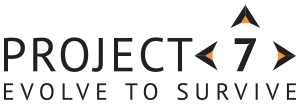De La Rue provide government and commercial organisations with products and services that allow countries to trade, economies to grow and people to move securely around an ever-more connected world. These products include banknotes, passports and secure product identifiers. De La Rue employs 3,230 local employees, providing specialist in-country knowledge and expertise in 24 global locations and manufacturing facilities across 4 continents.
One of these manufacturing facilities is the Debden site. The site prints approximately 1.3bn of the 7bn banknotes produced by De La Rue every year. The site’s in-house Operational Excellence structured framework has delivered several improvements to how the site functioned over the past 3 years, but found that problem-solving capabilities were a weak link. De La Rue employed Project7’s services in order to improve their approach to problem-solving.
The key stakeholders for this project were the Debden site management team.
The site’s biggest problem was that there was no clearly defined approach to problem-solving and management.
The site lacked a standardised methodology, which caused shallow problem-solving such as firefighting and troubleshooting, leading to repeat occurrences.
Furthermore, there was no leadership coaching capability in place to support problem management. Approaches to problem-solving were more directive than questioning, and didn’t challenge problem understanding, which led to a lack of learning and understanding.
The management team required support regarding their role in problem-solving and in the coaching of their teams. This overall lack of a clear structured system, led to a lack of problem resolution, with only containment measures being put in place, rather than a fix for the root causes. This was impacting the management team, as they were heavily involved in problem-solving rather than assuming a coaching role with the process teams.
By engaging with the site’s leadership team, Project7 developed and integrated a practical problem-solving system and methodology, in which the onsite management team could define and improve their approach through “Improvement Kata” coaching and development of their teams.
Initial steps for the implementation of these systems were:
- Development of a problem-solving mindset towards learning, as well as solving problems through understanding people’s critical thinking
- Introduction of the concept of systematic problem understanding and countermeasure experimentation, rather than relying on a single action fix
- Coaching of problem-solving thinking through the management team who can review, process confirm and challenge the way of thinking
- Training the Kata improvement and coaching process so that it could be applied to the management team’s daily routines and standard diary
Implementation was split into 3 phases:
Phase 1: Problem Management
- The management team’s role in terms of site problem-solving was determined. Nine staff were identified and trained and verified in a Nine Step Problem Solving methodology. A site problem management system was also introduced to govern the approach and process confirm.
Phase 2: Kata-based Gemba
- The team were trained and coached in Kata coaching and Improvement Kata, leading to the implementation in the Print area to develop critical thinking, which was used as part of a Katabased morning Gemba walk.
Phase 3: Learning Through Experimentation
- The Kata routine coaching plan was developed further to include carrying out observations of the management team’s onsite coaching and feedback. A go-look-see methodology was also introduced as part of problem-solving. This led to a development of a Kata-based A3 methodology to apply experimentation to improvement projects.
The impact these new approaches to problem-solving had to performance within the facility included:
- £5.3M site savings through 9-Step problem-solving and Kata coaching, since implementation
- Examples include inventory reduction, £5 polymer spoil reduction, ink utilisation, £10 polymer BPS model adaptation.
- £1.1M site cost avoidance – again, through 9-Step problem-solving and Kata coaching implementation
- Examples include £10 polymer spoilage and cut registration mitigation.

